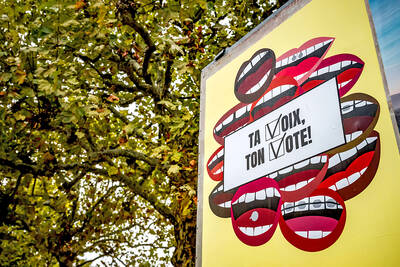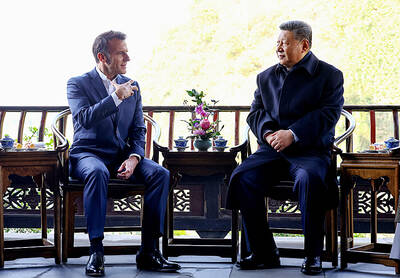Ronberto Garcia picks up a freshly-made, well-oiled automatic sub-machine gun from a formica table under a huge gazebo and screws on a long silencer.
"We sell these guns to anyone, provided they have money," Garcia says, proudly showing the weapon to a group gathered in his heavily secured concrete home.
The gun is his top-selling product and helps him make a killing, financially, in a nation where weapons sales are big business.
Garcia is the leading arms broker in Danao, a sprawling town of 100,000 people in the central Philippine province of Cebu and the center of the lucrative arms trade.
It is here in workshops tucked away in tiny back streets of Danao that self-taught gunsmiths churn out faithful replicas of arms from Israeli Uzis to 45-caliber handguns and KG-9 assault rifles used by American Navy Seals.
The illegal trade has become so large that it has surpassed the more traditional and legal methods of earning a living such as farming and fishing, according to townsfolk.
Many of the gunsmiths are former coconut farmers who have found that making guns is a more lucrative way of making a living than hanging from a tree harvesting coconuts for a few hundred pesos a day.
While there are no official statistics, thousands of people probably rely on gunmaking for money to send their children to school and to build modest cinder-block homes in Danao.
According to the Philippine National Police there are some 900,000 registered firearms in the Philippines and possibly as many as 450,000 unregistered. And that does not include the 150,000 firearms estimated to be in the hands of criminal gangs, warlords, communist and Muslim insurgents.
The local gunsmiths use thick sheets of metal salvaged or bought from ship-breaking yards in Cebu City, the bustling main port city some 35km to the south.
They used to churn out dozens of six and eight-shot revolvers called "paltiks," but as Garcia says "times have changed, and people want more powerful firearms."
Garcia is actually a fictitious name used by Danao's leading arms dealer whose family is among the pioneers of the illegal trade that dates back to the early 1970s.
"We are just plain businessmen who sell something people want," the portly 53-year-old Garcia said in his home, which is hidden from the main road and accessible only by a dirt road. You enter the heavy metal gates after passing several houses and a latrine guarded by dogs.
The copy KG-9 in Garcia's range looks exactly like the original, down to the insignia on its barrel that says: "Scorpion. Navy Seals Logistics. US government property."
Well-crafted high caliber guns are sold for up to 20,000 pesos while handguns fetch as much as 4,000 pesos a piece -- far better than the several hundred pesos typically earned by farmers on a good day of toiling in the fields.
While gunmaking is illegal, authorities have for decades turned a blind eye because it provides an alternative livelihood for the people than relying on subsistence farming and fishing.
"The sound of gunshots echoing in the air are welcomed by the townsfolk because it means money," Garcia says.
"The only time you see a lot of people in the market is when gun sales here are up. People cannot just rely on fishing and farming all the time," Garcia says. "Here, people are happy when they hear gunshots."
Sales are mostly up during election season when rival politicians beef up their private armies or security forces and during Christmas, when people have extra money to spend for guns as gifts, he said.
Guns made in Danao have become so famous that Japanese Yakuzas were known in the past to fly to the central Philippines to collect them, townsfolk say. Military officials as well as local politicians also buy them for their own purposes.
"Everyone buys from us. The military officials, some foreigners too, and civilians for their protection," Garcia says, but stops short when asked if he has ever sold firearms to communist guerrillas who proliferate in the countryside.
Danao guns are bought on a cash basis, and deals are done without any papers changing hands. Word of honor is important between buyer and seller and anyone seeking to buy is screened thoroughly.
Tension is high around Garcia's compound, and his men are on alert because recently a special police task force swooped down on his neighbor's home and confiscated 160 pieces of "bakal," the local slang for guns.
There are no actual figures as to how many guns are produced in Danao at any given time, but Garcia estimates up to 500 units of various gun models are smuggled out of the area every month.

PARLIAMENT CHAOS: Police forcibly removed Brazilian Deputy Glauber Braga after he called the legislation part of a ‘coup offensive’ and occupied the speaker’s chair Brazil’s lower house of Congress early yesterday approved a bill that could slash former Brazilian president Jair Bolsonaro’s prison sentence for plotting a coup, after efforts by a lawmaker to disrupt the proceedings sparked chaos in parliament. Bolsonaro has been serving a 27-year term since last month after his conviction for a scheme to stop Brazilian President Luiz Inacio Lula da Silva from taking office after the 2022 election. Lawmakers had been discussing a bill that would significantly reduce sentences for several crimes, including attempting a coup d’etat — opening up the prospect that Bolsonaro, 70, could have his sentence cut to

A plan by Switzerland’s right-wing People’s Party to cap the population at 10 million has the backing of almost half the country, according to a poll before an expected vote next year. The party, which has long campaigned against immigration, argues that too-fast population growth is overwhelming housing, transport and public services. The level of support comes despite the government urging voters to reject it, warning that strict curbs would damage the economy and prosperity, as Swiss companies depend on foreign workers. The poll by newspaper group Tamedia/20 Minuten and released yesterday showed that 48 percent of the population plan to vote

A powerful magnitude 7.6 earthquake shook Japan’s northeast region late on Monday, prompting tsunami warnings and orders for residents to evacuate. A tsunami as high as three metres (10 feet) could hit Japan’s northeastern coast after an earthquake with an estimated magnitude of 7.6 occurred offshore at 11:15 p.m. (1415 GMT), the Japan Meteorological Agency (JMA) said. Tsunami warnings were issued for the prefectures of Hokkaido, Aomori and Iwate, and a tsunami of 40cm had been observed at Aomori’s Mutsu Ogawara and Hokkaido’s Urakawa ports before midnight, JMA said. The epicentre of the quake was 80 km (50 miles) off the coast of

RELAXED: After talks on Ukraine and trade, the French president met with students while his wife visited pandas, after the pair parted ways with their Chinese counterparts French President Emmanuel Macron concluded his fourth state visit to China yesterday in Chengdu, striking a more relaxed note after tough discussions on Ukraine and trade with Chinese President Xi Jinping (習近平) a day earlier. Far from the imposing Great Hall of the People in Beijing where the two leaders held talks, Xi and China’s first lady, Peng Liyuan (彭麗媛), showed Macron and his wife Brigitte around the centuries-old Dujiangyan Dam, a World Heritage Site set against the mountainous landscape of Sichuan Province. Macron was told through an interpreter about the ancient irrigation system, which dates back to the third century